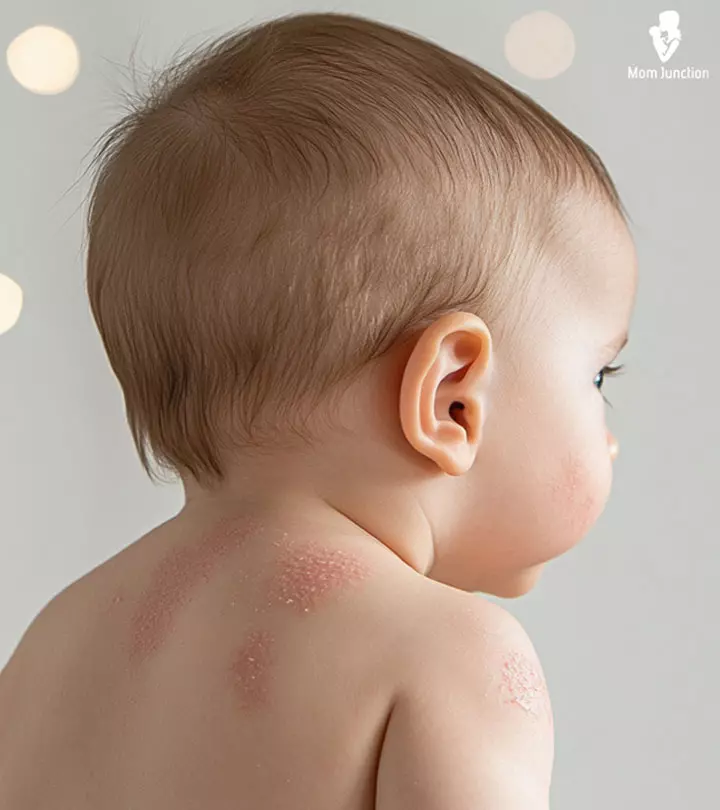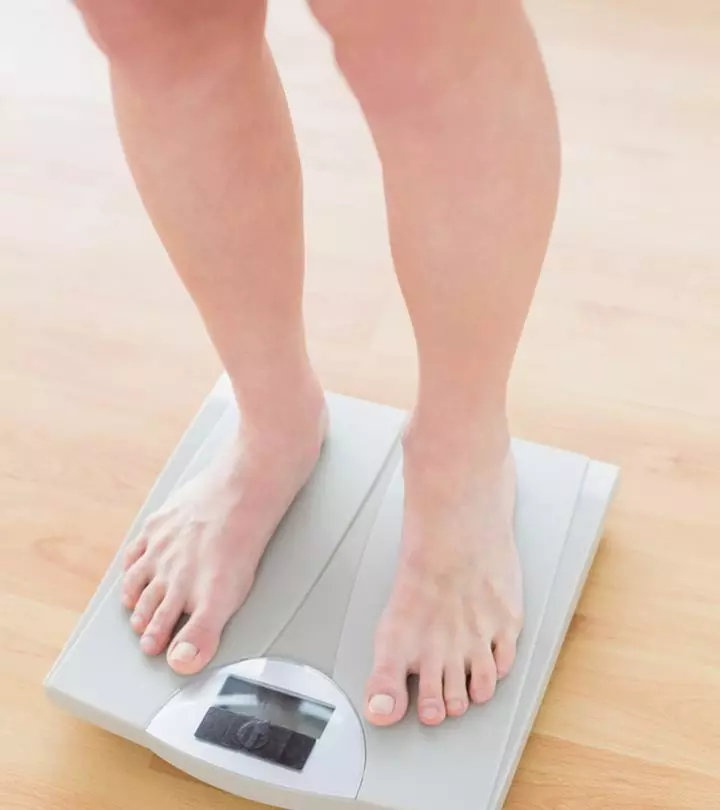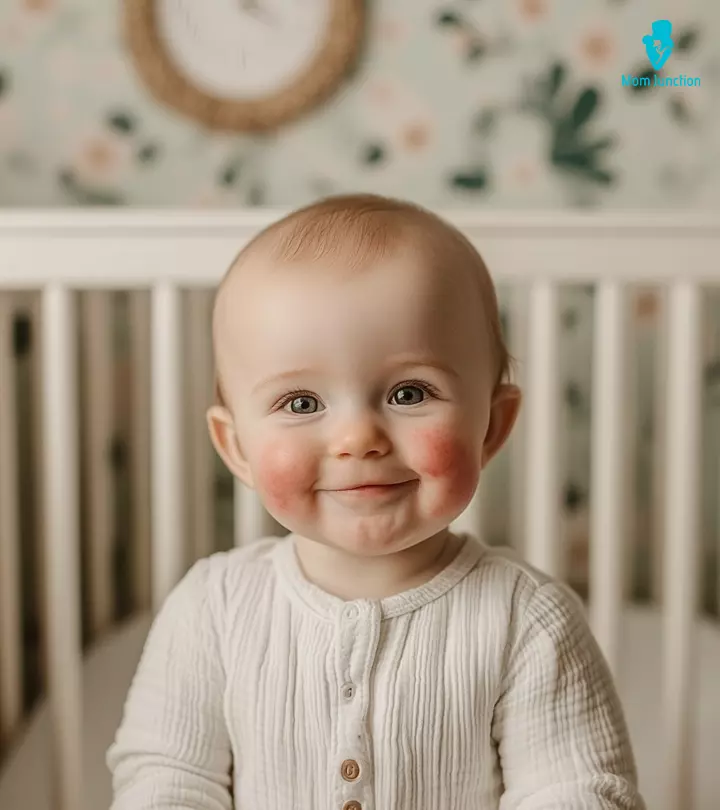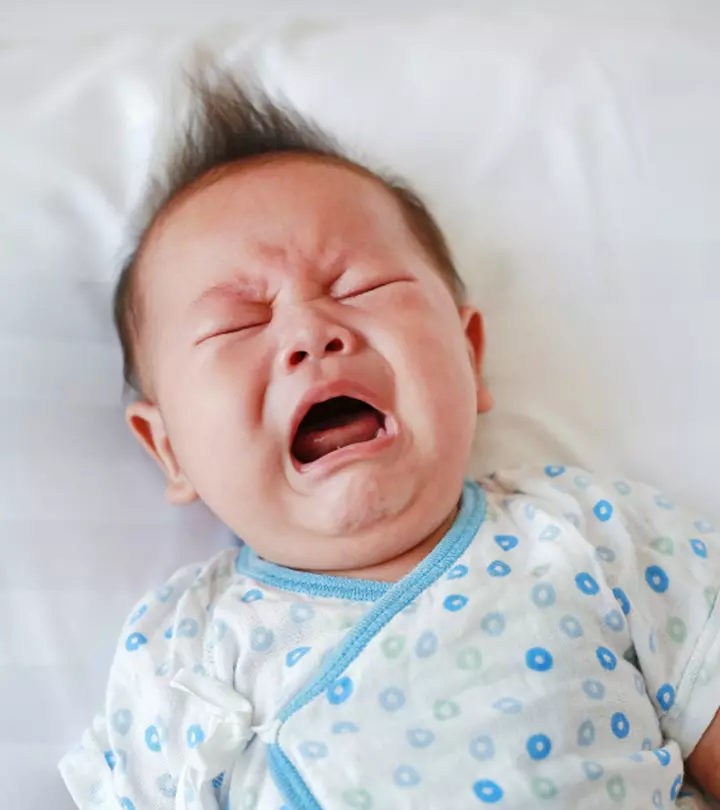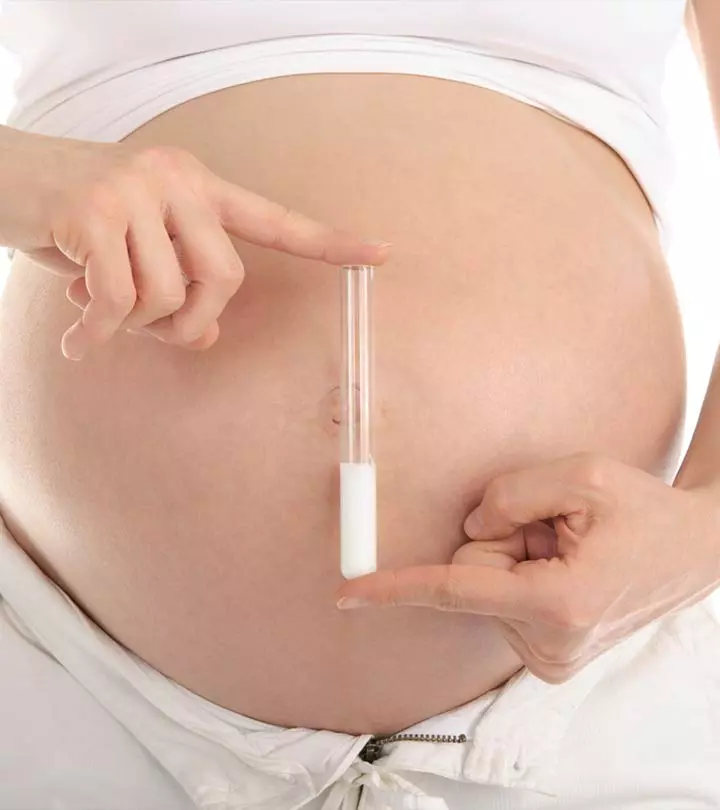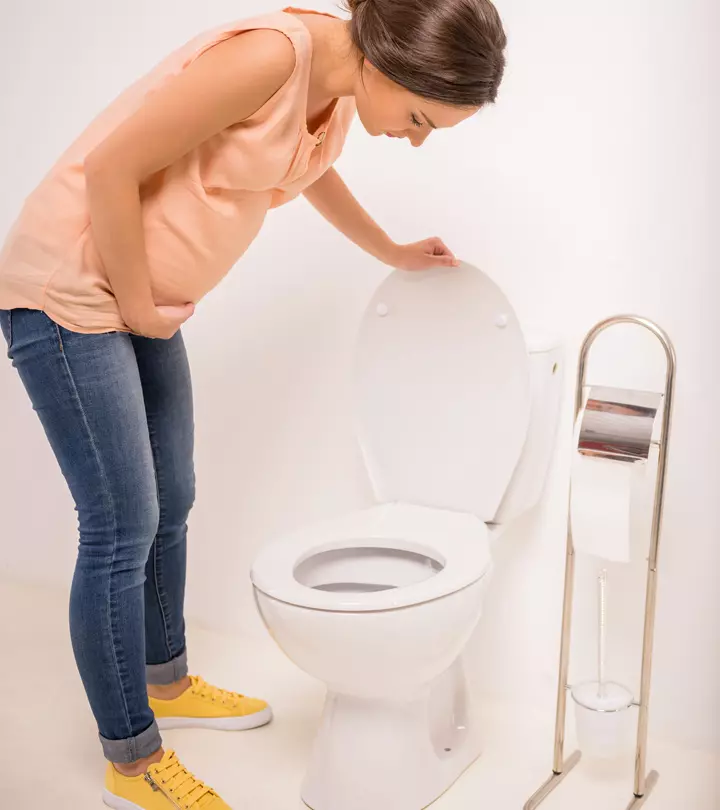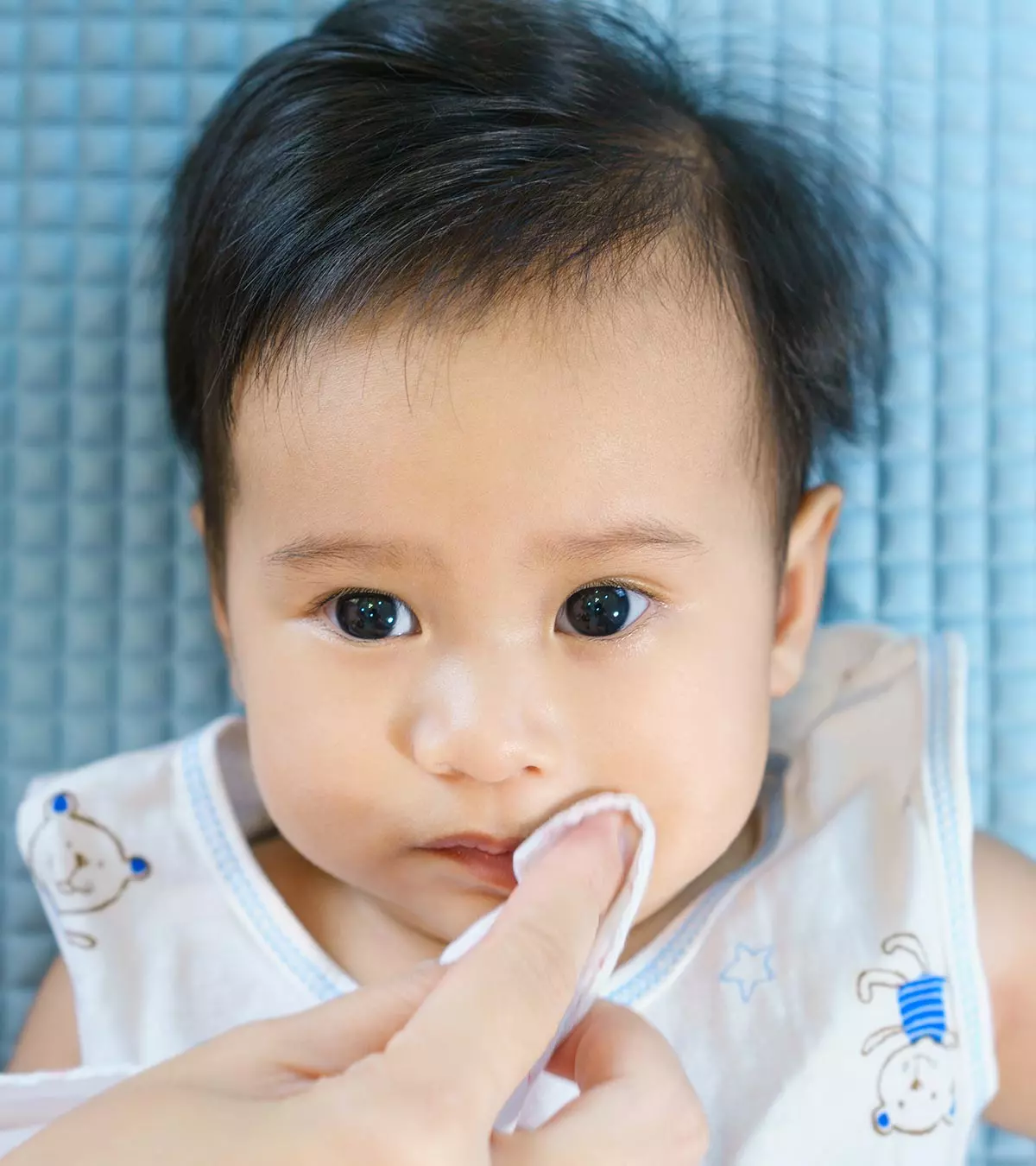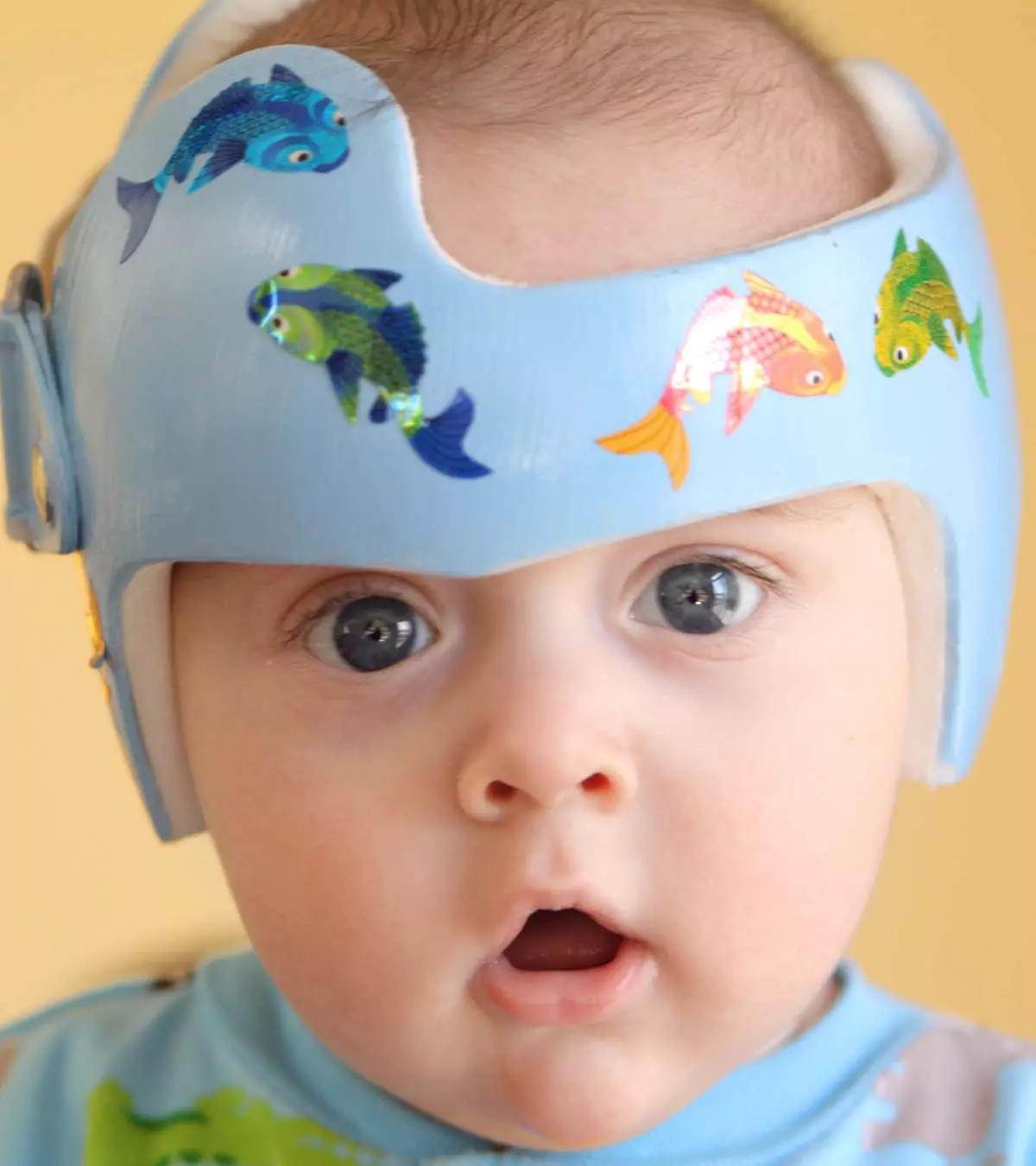
Image: iStock
In a pediatric ward, you may have observed that some infants are advised to wear headgear; this may have made you wonder, “why do babies wear helmets?”
This is called helmet therapy, helmet orthosis, helmet molding therapy, or cranial orthosis. It is a treatment for unfused cranial sutures in infants. The helmets gently modify and mold the skull shapes and are used for infants between four months and one year.
A cranial orthosis helmet has a hard outer shell and an inner foam part, which presses the head’s protruding side to expand the flat spot. Seeking medical care for a misshapen head in early infancy is beneficial since it may get difficult to shape the skull once the sutures fuse.
Read on to know more about helmet therapy in infants.
Key Pointers
- Helmet therapy is recommended for babies with large flat spots that do not change by four months.
- Helmet therapy may be used to correct plagiocephaly, craniosynostosis, etc.
- It may last for around three months to get the desired results.
Why Do Babies Need Helmets?
Helmet therapy for babies is recommended to correct the shape of their fragile head. The routine newborn visit includes the assessment of the head circumference and shape. Pediatricians may suggest helmet therapy if your baby has a large flat spot that is not changing by the age of four months.
Wearing a helmet between four and six months of age can be more effective than later months. Skull shape may change with a helmet during this period. Later on, especially after one year of age, helmet therapy may not change the skull’s shape since it becomes harder and begins to fuse.
Helmet therapy is included in cosmetic treatments since the head’s shape is not a cause of developmental problems or brain damage.
What Conditions Are Treated With Helmet Therapy?
The following conditions are treated with helmet therapy (1):
- Plagiocephaly

Image: IStock
Plagiocephaly, also called flat head syndrome, is the flattening of a part of the baby’s head. Continuous pressure on one side of the head causes this condition. Usually, it happens on the back of the head since babies lie on their back for long periods, so it is called positional plagiocephaly.
Positional plagiocephaly is common since lying back is the safest sleeping position for babies, as recommended by the American Academy of Pediatrics. Although there is a change in the head’s shape, plagiocephaly is not dangerous since it does not affect brain growth and development in infants.
A flat spot does not cause pain or any other symptoms and may resolve with positional changes and physiotherapy in some cases. Helmet therapy is recommended for severe deformation not improved by other methods.
Depending on the severity, plagiocephaly is classified into mild, moderate, and severe. The severity is determined by measuring the head circumference, width, length, cephalic index, and cranial vault asymmetry. The graph below depicts the severity of plagiocephaly with the baby’s age. It can be seen from the graph that children aged between 0-8 months experience some form of plagiocephaly.

Plagiocephaly severity chart for babies
Source: Plagiocephaly Severity Chart; Cranial Therapy Centers Things to know
Things to know- Craniosynostosis
Craniosynostosis is a condition in which one or more of the fibrous sutures in an infant (very young) skull prematurely fuse by turning into bone (ossification), this changes the growth of the skull. This can be mostly due to genetic issues in many babies or related to hormone imbalances or related issues in the pregnancy. Premature fusion of bones could restrict the growth and development of the brain. Head shape can be abnormal when the brain grows inside the fused skull.
Early closure of different types of sutures on the skull can result in different shapes of the head for example; early closure of metopic sutureiA suture that separates the two frontal bones of the forehead is called trigonocephaly, and sagittal sutureiA midline suture that joins the two parietal bones of the skull is called scaphocephaly. Closure of coronal suturesiA suture situated between the frontal and parietal bones of the skull led to brachycephaly or short head. Depending on the affected sutures, the shape of the head and complications may vary in craniosynostosis.
Missing soft spots (fontanel) can be a noticeable symptom of craniosynostosis in babies. Surgical treatment is needed for relieving the fused sutures. Helmet therapy is usually done after the surgery to aim to have a typical shape of the head.
How Long Will A Baby Need To Wear A Helmet?
The need for helmet therapy is identified around four to six months of age, and most babies wear helmets for a minimum of three months to remold the head. Babies need to wear a helmet all the time except for bathing or dressing time.
They need to wear helmets until their skull shape becomes normal. Some may need helmet therapy for a few months to correct the shape. However, the helmet therapy ends before the skull bones are fused. This may happen around one year of age, and beyond this period, helmet therapy is not effective in remodeling the head shape.
Is Helmet Therapy The Only Treatment To Correct Skull Shape?
Changing positions and physical therapy may help to deal with mild skull deformations. However, moderate and severe deformations require helmet remolding therapy or cranial orthosis.
Other treatment options may include (2) (3):
- Increase the tummy time to reduce pressure on the head. However, do not let infants on their tummy without supervision since this may increase the SIDSiSudden, unexpected, and unexplained demise of an infant under the age of one risk.
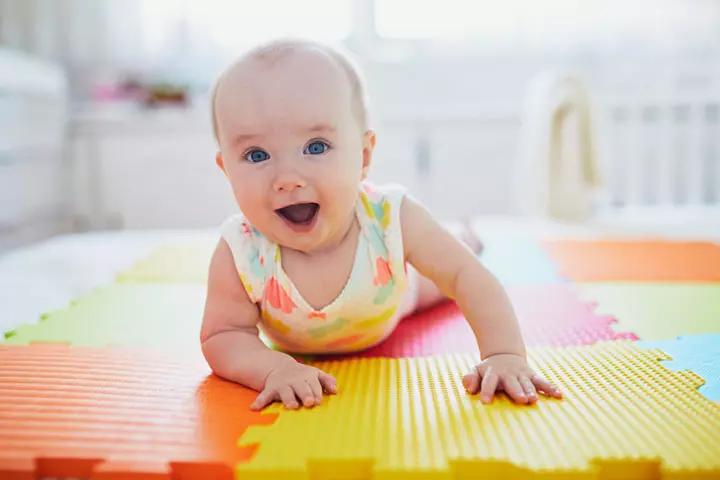
Image: Shutterstock
- Lift and hold your baby regularly. This helps to avoid continuous pressure on the skull. Support the head of younger infants while holding them.
- Try to change the baby’s position to adjust the pressure on the flat spot. You may try to put them on the produced side of the head.

Image: IStock
- Breastfeed on different sides to avoid pressure on flat spots.
- Play or interact with the baby from the direction they avoid giving pressure on flat spots, while turning their head towards you.
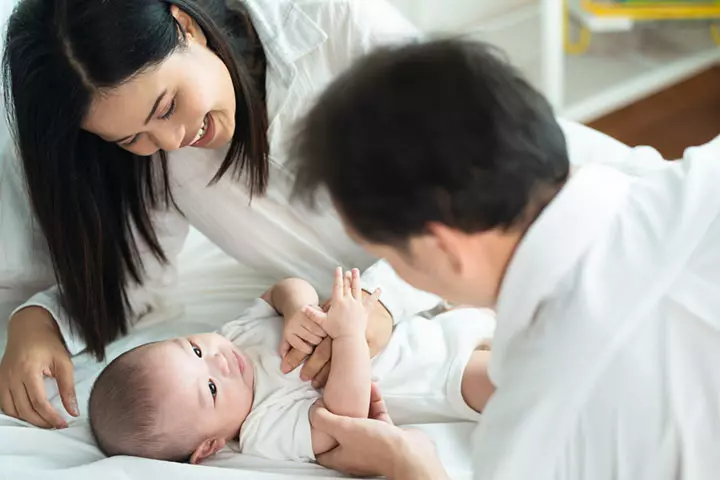
Image: Shutterstock
Flat spots may resolve themselves or with positional changes in many babies. Seek a pediatrician’s advice to know the requirement of helmet therapy to correct it.
 Quick tip
Quick tipAre Remolding Helmets Uncomfortable?
Helmet therapy may not cause pain or discomfort for babies. These helmets are custom-made to fit a baby’s head. As they are made using special material such as foam inside, it can be more comfortable than sports helmets.
Timely adjustment of the size helps avoid discomfort due to too tight a helmet. If your baby’s helmet seems to be readjusted, consult their doctor as soon as possible.
You may follow doctors’ recommendations to keep the helmet clean and replace it if required. Skin irritation and odor may occur if the helmet is worn on a wet head. You may let your baby’s hair dry well before wearing a helmet after the bath.
A mother of two, who authors the blog ‘My Helmet Baby (Squared),’ shares the account of her daughter Emily’s response to helmet therapy. She expresses, “Emily has adjusted to the helmet very well. It seemed like she did not sleep quite as well the first 2 nights that she wore it, but since then, she seems to be back to normal. I gave her little head a massage last night and this morning, and she seemed to just love it … Every time we take the helmet off, she does this little shiver, which is hilarious. I am glad to see that she has adjusted well. I have set a goal to have her helmet off in 3 months (i).”
How Are Cranial Remolding Helmets Different From Other Helmets?
Cranial orthosis helmets are different from other childhood helmets used for safety and protection during sports. Sports helmets can be used while riding a scooter, skateboard, bike, or just during outdoor playtime. These are used as a precaution against accidents such as a fall or hit and injury during sports and may come in average head sizes of children.
Usually, pediatricians refer babies with large flat spots or other misshapen skull shapes to pediatric orthotists for further evaluation. Specialists examine the baby’s head, and if there is a requirement for helmet therapy, they will create a custom helmet.
A laser light or mold is used to measure the baby’s head size and shape and a helmet is made according to the measurements. These helmets are designed to adjust sizes during the entire therapy process as the baby’s head size and shape change. They are used to reshape the skull but not to protect from head injuries.
Frequently Asked Questions
1. Do baby helmets affect brain development?
No, baby helmets do not affect brain development. However, they may have mild effects, such as skin irritation, pain, or foul odor. These issues get resolved once the helmet therapy is discontinued. Good hygiene also helps combat some of these problems (4).
2. What happens if my baby doesn’t wear a helmet?
Positional plagiocephaly does not cause complications and may be treated in alternative ways if the baby does not wear a helmet. Some of these ways are changing the head’s position from time to time or encouraging babies to move their heads and look in different directions.
However, congenital plagiocephaly may lead to severe complications such as head deformity or developmental delay; therefore, helmet therapy is necessary to reshape the skull (5) (6).
3. Do babies sleep well with helmets?
Yes, most babies sleep well with helmets as they mostly do not cause any discomfort (7).
Some babies wear helmets as a part of a treatment called cranial orthosis or helmet therapy for infants. These helmets are custom-made, and they help to shape the baby’s head. The cranial sutures are not fused in infancy; thus, the head’s shape can be modified using helmets. You should seek your doctor’s advice to correct the head shape as early as possible since it should be done before the sutures begin to fuse. Further, increasing tummy time, breastfeeding on different sides, and providing proper beddings may reduce the risk of flat head syndrome in babies.
Infographic: Baby And Helmet Care
During the initial days, a baby could feel uncomfortable with the equipment around their head. The helmet may trap heat, leading to sweat and skin irritation adding to the discomfort. Maintaining proper helmet hygiene and using the helmet rightly could reduce these discomforts. We have prepared the following infographic discussing these aspects, making the cranial orthosis journey smooth for your baby. Illustration: Momjunction Design Team
In this video, a pediatrician explains plagiocephaly, a condition where a baby’s head is flattened. She explains the use of a baby helmet and how the condition can be corrected.
Personal Experience: Source
MomJunction articles include first-hand experiences to provide you with better insights through real-life narratives. Here are the sources of personal accounts referenced in this article.
i. One-week follow-up.https://myhelmetbabysquared.wordpress.com/2012/03/23/119/
References
1. Helmet Therapy; Johns Hopkins Medicine
2. Cranial Remolding; Children’s Healthcare of Atlanta
3. Baby Helmet Therapy; Healthychildren; The American Academy of Pediatrics
4. William C. Gump et al.; Complications associated with molding helmet therapy for positional plagiocephaly: a review; (2013)
5. Pediatric Plagiocephaly; Children’s National Hospital
6. Positional Plagiocephaly; American Association of Neurological Surgeons
7. Helmet Therapy for Your Baby; Johns Hopkins Medicine
8. Plagiocephaly; Boston Children’s Hospital
9. Plagiocephaly and brachycephaly (flat head syndrome); NHS
Community Experiences
Join the conversation and become a part of our nurturing community! Share your stories, experiences, and insights to connect with fellow parents.
Read full bio of Dr. Anisa Vahed
Read full bio of Dr Bisny T. Joseph
Read full bio of Rohit Garoo
Read full bio of Shinta Liz Sunny






